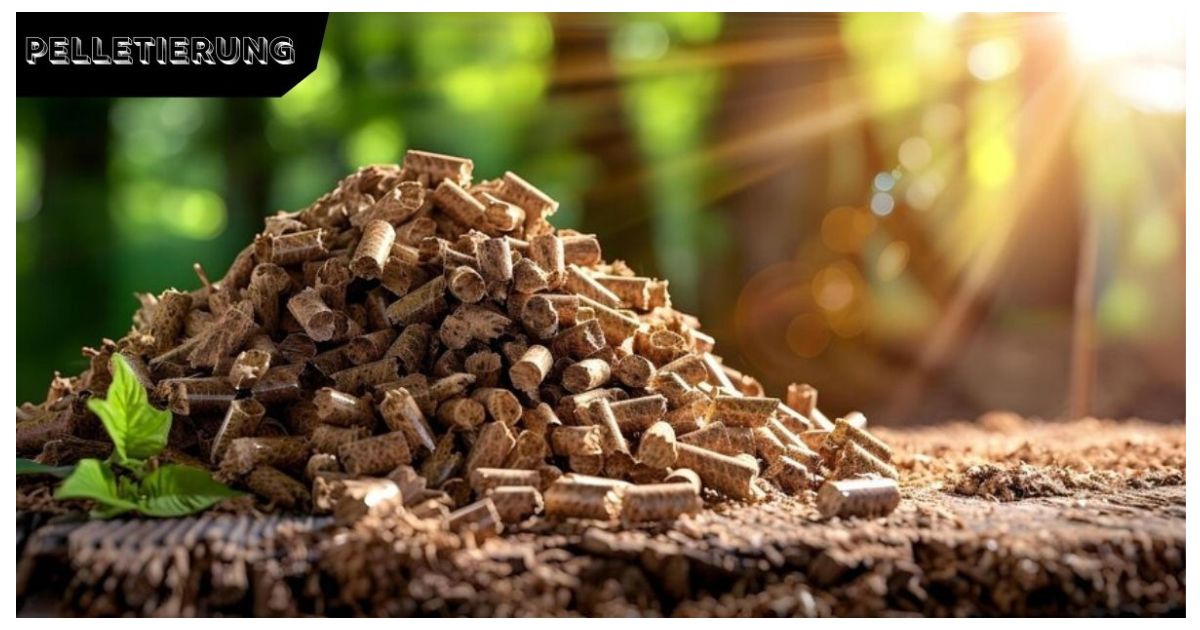Pelletierung, also known as pelletizing, is a crucial industrial process that involves the compression of fine materials into small, solid spheres or “pellets.” Industries widely use this method to transform loose, powdery substances into a more manageable and uniform form, including agriculture, energy, metallurgy, and pharmaceuticals. In this article, we will explore the process of pelletization, its benefits, and its applications across different industries.
What is pelletierung ?
pelletierung is a process that involves the agglomeration of fine particles into larger, more uniform shapes called pellets. The primary goal of pelletizing is to create a product that is easier to handle, transport, and store. Additionally, pellets often provide enhanced physical properties, such as increased strength, density, and durability, which can make them more suitable for various applications.
Pellets can range in size from a few millimeters to several centimeters, depending on the desired use and the material being processed. The pelletizing process typically involves a combination of moisture, pressure, and heat, which helps bind the particles together into a stable, cohesive structure.
Key Stages of the Pelletization Process
Material Preparation: The raw material, usually in the form of fine powder or dust, is first pre-treated by drying, grinding, or mixing to achieve the right consistency and moisture level.
Agglomeration: The prepared material is then fed into a pelletizing machine or disc. At this stage, pressure, along with the addition of binding agents (if needed), helps form the raw material into small pellets.
Pellet Formation: The compression process continues as the material is further compacted into uniformly shaped pellets. This step may involve the use of a die to achieve the desired pellet size.
Cooling and Hardening: After the pellets are formed, they are cooled down and dried to reduce moisture content, which increases their durability and prevents crumbling during handling.
Screening and Packaging: Finally, the pellets are screened to remove any fines (undersized or broken pellets), and the finished product is packaged for transport or further use.
Benefits of Pelletization
The pelletization process offers a number of benefits for industries that need to handle fine or powdery materials. Some key advantages include:
- Ease of Handling: Pellets are less messy and more convenient to transport and store compared to loose powders or granular materials.
- Enhanced Product Stability: Pellets are less prone to dusting, which reduces the risk of product loss and air pollution during handling.
- Improved Bulk Density: Pelletizing increases the bulk density of materials, allowing more efficient use of storage space and reducing transportation costs.
- Uniformity: Pellets offer consistency in size and shape, leading to more predictable performance in industrial applications.
- Better Flowability: Pellets typically flow better in hoppers and other equipment, making them ideal for automated processes.
Applications of Pelletization Across Industries
Pelletization plays a significant role in a wide range of industries, each utilizing the process for different reasons based on their unique material needs. Here are some of the most common sectors that use pelletizing:
Agriculture and Animal Feed
Pelletizing is widely used in agriculture to produce animal feed in the form of compact pellets. Pelletized feed is easier for animals to digest and helps ensure a balanced intake of nutrients. The pelletization process also allows producers to incorporate various additives, such as vitamins and minerals, into the feed in a more consistent manner.
Energy and Biomass Production
Metallurgy and Steel Production
The metallurgical industry heavily relies on pelletization to produce iron ore pellets, which are used in steelmaking processes. Iron ore, in its natural state, is often fine and powdery, making it difficult to handle and process. Pelletization transforms the ore into more manageable pellets that companies can efficiently use in blast furnaces, reducing energy consumption and improving the overall efficiency of steel production.
Pharmaceuticals and Nutraceuticals
In the pharmaceutical industry, pelletization is a common method for creating controlled-release medications. Manufacturers regulate the rate at which active pharmaceutical ingredients (APIs) release into the body by pelletizing them, which improves the effectiveness of the treatment. They also produce nutraceuticals, such as vitamins and dietary supplements, in pellet form for ease of consumption and improved bioavailability.
Waste Management and Recycling
By turning waste into pellets, companies can create new products, such as plastic pellets for manufacturing or organic fertilizer for agriculture. Morover, pelletizing helps reduce the environmental impact of waste and supports the circular economy by promoting the reuse of valuable resources.
Factors Affecting Pellet Quality
Several factors influence the quality of pellets produced during the pelletization process. These factors include:
- Moisture Content: The right level of moisture is essential for pellet formation. Too much moisture can result in soft, crumbly pellets. On the other hand, too little moisture can cause the material to be too dry to bind together properly.
- Particle Size: The size and distribution of the particles being pelletized can impact the final pellet quality. Finer particles tend to bind more effectively, but if they are too fine, they can cause dust issues.
- Pressure and Temperature: Adequate pressure and temperature are necessary to ensure that the material is compacted correctly. If these parameters are not set properly, it can result in weak or brittle pellets.
- Binding Agents: In some cases, additional binding agents may be required to help hold the pellets together. The choice of binder can affect the pellet’s strength, durability, and performance.
Challenges in pelletierung
Despite its advantages, the pelletization process can present some challenges, such as:
- Energy Consumption: The process requires a significant amount of energy, especially when dealing with tough materials that require high compression forces.
- Equipment Maintenance: Pelletizing machines must be properly maintained to prevent wear and tear. This can affect pellet quality and production efficiency.
- Raw Material Variability: Inconsistent raw materials can lead to variations in pellet quality, requiring adjustments to the process to achieve optimal results.
Conclusion
pelletierung is a versatile and valuable process that has a wide range of applications across various industries. By converting fine, loose materials into more manageable and durable pellets, companies can benefit from improved efficiency, ease of handling, and better performance of their products. Whether in agriculture, energy, metallurgy, or pharmaceuticals, pelletization is a proven solution for transforming raw materials into high-quality, usable forms.
FAQ’s
What is pelletization?
Pelletization compresses fine particles or powders into small, solid spheres called pellets. Industries widely use this method to enhance the handling, storage, and transportation of materials
What are the main uses of pelletierung?
Various industries, including agriculture, energy, metallurgy, pharmaceuticals, and waste management, utilize pelletierung.
Why is pelletization important in the energy sector?
In the energy sector, pelletization is crucial for producing biomass fuel pellets from materials like wood, sawdust, and agricultural waste. These pellets are a renewable and cleaner alternative to traditional fossil fuels, used in power generation and heating systems.
What factors affect pellet quality?
The quality of pellets is influenced by several factors, including moisture content, particle size, pressure and temperature during pellet formation. Achieving the right balance of these factors is essential for producing strong, durable pellets.
What challenges can occur during the pelletierung process?
Common challenges in pelletierung include high energy consumption, equipment wear and tear, and variability in raw material quality. Addressing these issues requires careful process control and regular maintenance of pelletizing machines to ensure consistent pellet quality.








